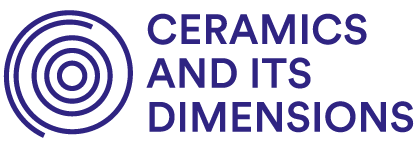

An important objective of the project is to raise awareness of young people taking into account the new generation of artists, designers, stakeholders, architects dealing with ceramics. The part Future Lights in Ceramics aims to provide profound knowledge on ceramics to young people through contact and discussion with experts. Together with the European Ceramic Society (ECerS), federation of European national ceramic societies, an exchange of artistic and creative skills and knowledge about technology and material science is intended. The transfer of knowledge will drive new aspirations. The group of young people, the Future Lights in Ceramics, coming from the world of research, design, architecture, industry, will exchange their qualifications and expose their ideas to extend and improve innovation of technical ceramics.
The aim of the Young Ambassador Programme is to establish an international network with all young actors dealing with ceramics to exchange their ideas about the material and its perspective considering new consumers tendencies and new challenges such as integration and sustainable development. They will expose the results of their reflection through presentations at relevant events. Young Ambassadors will develop a meaningful and on-going relationship which will be an international guideline to encourage research and innovation in all the fields of ceramics. The first Future Lights were awarded during a competition at Staffordshire University in October 2015.
Ceramics have always played a prominent role in the life of people in every European country. Its products were items used on daily basis for decoration or representation; they were and are still present in private homes as well as public areas in towns and villages. Ceramics in Europe have been shaped by the strong interdependency in Europe’s cultural region, techniques and colours, as well as by being used in a historical-cultural context such as for eating and drinking, decoration or architecture. Ceramics connect people, but they also enable regional differences, such as traditions, life-styles, and social or economic behaviours to be expressed and therefore develop an individual identity. Thanks to its characteristics and design possibilities, ceramics play an outstanding role in the lives of people and will continue to do so.
The past few decades have changed both Europe and the world presenting new social and economic challenges. Over the course of globalisation, our lifestyles have changed and are now closer to each other than ever before. There is a real cultural interchange which is also giving an impact on the design of European ceramics.
This ambitious project will connect museums, architects, designers, industry, and stakeholders from different European countries to explore the material according to its cultural, historical, technical, and artistic aspects. The course of the project will be punctuated by a series of events: exhibitions, workshops, symposia in all partner countries to encourage knowledge in the field of ceramics and to develop an inter-cultural dialogue between European ceramics regions.
The project intends to analyse the evolution and the different ways of use of ceramics from the baroque period to the present time. It places a lot of importance in discovering the future by studying the evolution of ceramics according to new challenges such as consumer’s needs, sustainable development and integration of minorities. Potential of new technologies will be explored to enable communication and access for numerous groups.
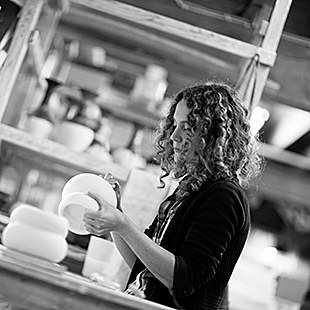
Chloë has studied art, design and ceramics extensively. For three years she has been producing her tactile porcelain tableware pieces, working from her studio in Co. Wicklow, Ireland. She is constantly inspired by nature and has recently finished a month long residency at the Zentrum für Keramik in Berlin. Chloe has won an RDS National Craft Award and shown in different exhibitions and fairs such as Ceramics Ireland Selected Exhibition at the Pearse Museum, Dublin and Innovations in Ceramic Art in Cambridge.
Statement
I create tactile porcelain tableware. Craftsmanship and attention to detail are paramount in my work. Every element of design has been considered to stimulate and heighten the user’s experience of the piece. The work is wheel-thrown and then altered. I add a spiral in the soft clay, then make an indent where the handle will go. This allows for stimulation of the sense of touch. The rims of the mugs are thrown thinly which is crisp and pleasing for the lips. The base of each piece is individually polished leaving the translucent porcelain soft to the touch.
Contact: www.chloedowds.com
Cups, 2017 Porcelain, coloured slip inlay Wheel-thrown. The rounded base allows each piece to sit and move in a different way giving an individuality to each.
Cups, 2017 Porcelain, coloured slip inlay Wheel-thrown. The rounded base allows each piece to sit and move in a different way giving an individuality to each.

Originally from Armenia, Maria Gasparian is a London based ceramic designer, architect and researcher. Maria’s Master’s Project won Unilever’s Sustainability award and Mullen Lowe Nova Runner up Prize (2016). 2016 Winston Churchill Fellow, Maria travelled in Europe and the USA researching manufacturing methods and applications of architectural ceramics.
Statement
Originally from Armenia, Maria Gasparian is a London based ceramic designer, architect and researcher. Maria’s Master’s Project won Unilever’s Sustainability award and Mullen Lowe Nova Runner up Prize (2016). 2016 Winston Churchill Fellow, Maria travelled in Europe and the USA researching manufacturing methods and applications of architectural ceramics.
The diversity of applications that ceramic pieces offer through the use of scale, colour and texture make them adaptable to diverse contexts. Diverse forming methods that are used to create pieces combine craft and digital techniques as well as collaboration with the industry.
Contact: www.mariagasparian.co.uk
Folium, 2016, 45 x 35 x 25 cm, stoneware clay, red glaze, extruded and slip cast
Ceramics transforming spaces, prototype: stoneware clay, red glaze, extruded and slip cast
Baroque Bench, 2016, modular-self-supporting pieces, 60 x 30 x 18 cm, stoneware clay, white matt glaze, extruded and slip cast
Baroque Brick, 2016, modular-self-supporting pieces, 12 x 12 x 7 cm, stoneware clay, white matt glaze, extruded and slip cast
Symbioses, 2017, 12 x 12 x 7 cm, stoneware clay, bisque fired, extruded and slip cast
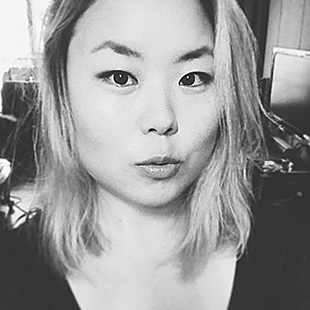
Ahryun is an artist, designer-maker and skillful craftsman. She widens her approaches from different educational experiences. Her work is based on professional skills alongside fundamental knowledge of material, which is colourfully vibrant, tactile and extraordinary, and was exhibited at several shows, festivals and fair such as the Seoul Design Festival, London Crafts Week, the Salone Internatzionale del Mobile in Milan. In 2017 she was awarded with the special award by Brera Academy Milan and was a finalist of the Bavarian Crafts Council Award for Young Applied Arts.
Statement
“How do you consider ceramics?”
Clay as a fashionable material, ceramic becomes fertile territory for experimentation and potential creative speculation in contemporary art. Unlike the traditional aspect considered ceramic as pot/craft from my culture, contemporary ceramics widen diversity whilst breaking the boundaries between Craft, Design and Art. My interest is exploring the future of ceramics, how it can be developed from tradition to contemporary. Based on material-driven research especially about colour in porcelain, I create intense visual language with extraordinary surface manipulation. My attempt is to challenge every conventional notion in ceramics whilst contemplating the area between function and non-function.
Contact: www.ahryunlee.com
What means functionality? – 13 x 13 x13cm, porcelain, high-fired coloured stain, wheel thrown, hand built, glazed, 1260 °C oxidation firing
Camouflage Series – 8 x 8 x 18cm, porcelain, high-fired coloured stain, slip-casted, hand built, glazed, 1260 °C oxidation firing
The serious play – 3 x 3 x 13cm, porcelain, high-fired coloured stain, wheel thrown, unglazed, polishing, 1250 °C oxidation firing
Materiality series – 3 x 3 x 13 cm, porcelain, slip-casted, multiple glazed, multiple firing, 1260—1280 °C oxidation, reduction firing
Curioddity series – various sizes, porcelain, wheel thrown, hand built, coiled, multiple glazed, 1260 °C oxidation firing
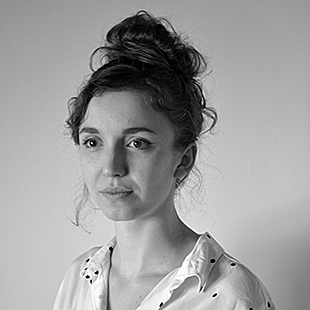
Weronika Lucińska was born in 1989 in Poland. She graduated from the Faculty of Ceramics and Glass – ceramic design at Academy of Art and Design in Wrocław. Since 2013 she is a PhD student. She participated in many international competitions and exhibitions in Spain, Latvia, Austria, Germany, Italy, France, Portugal, and Czech Republic.
Statement
In my creativity there is a special place for water – as a symbol, element and material. Water is my main inspiration in sculpture and design, but it also appears in my art installations as a material/ medium. Under the artistic expression of my research is the desire to spell in motion a ceramic material.
I analyze optical phenomena that can be observed on objects in contact with liquids and glass. I use water directly or treat it as a model, an inspiration for the creation of new forms and installations.
Contact: www.weronikalucinska.com
End of the Edge- Skyline, 2014, 28 x 20 x 15 cm, porcelain, casted, hand-build, 1300°C
Circulation, 2012, 100 x 80 x 40 cm, parian porcelain, casted, 1200°C
From series Oceanarium, 2013, 100 x 40 x 40 cm, porcelain, wheel-thrown, 1250°C
From series Oceanarium-Balance, 2013, 100 x 40 x 40 cm, stoneware, wheel-thrown, hand-build, 1200°C
Icebergs, 2017, 30 x 30 x 35 cm (each aquarium), porcelain, casted, 1300°C
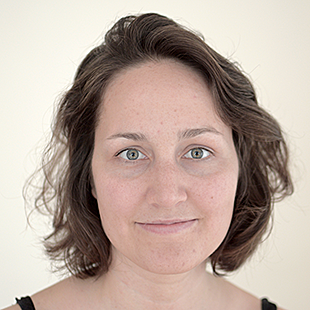
Julia Schuster (b. 1989, Vienna) is an UK-based Austrian artist. BA (2013) Faculty of Design & Arts, Free University Bolzano, Italy; MA Ceramics (2016, Distinction) Royal College of Art, London; recipient of the Sir Eduardo Paolozzi Travel-Grant (2015); residencies in Denmark, UK and Nepal; various exhibitions across the UK and Europe.
Statement
Julia’s cross-disciplinary work is anchored in making with clay but places itself in an expanded field using also video, performance and writing. Driven by an investigation of the body, it being our primal source of experience, her work is concerned with different points and ways of being in contact. Contact with skin as a site as skin constitutes subjectivity, demarcates the border between interior and exterior and is both a boundary and a point of connection. And contact with matter as she ‘makes, writes and moves through clay’ showing her performative approach to making in clay and ceramics.
Contact: instagram @juliaschuster_art
Gendered Postures, various dimensions, plaster, cast
Rules of Intake, 2015, 140 x 55 x 18 cm, MDF, earthenware, slipcast, glazed, 1160°C
From series Caressing, 2016, x x x cm, porcelain, hand-built, burnished, 1260°C
Pushing, 2016, H 50 x W 31 cm x 3 cm, earthenware, terra sigillata, hand-built, 1160°C
Videoarbeit ‘Longing’
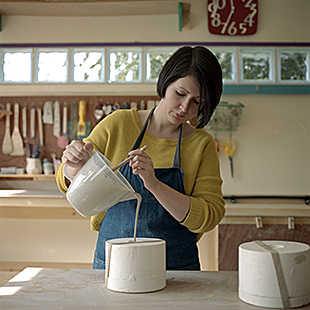
Sophie was born in 1986 in Kent. She graduated from Cardiff Metropolitan University in 2014 with a First Class Honours in BA Ceramics, winning the Eisteddfod Y Lle Celf Art CASW Purchase Prize in 2015. She is part of the Crafts Council’s Hothouse 2017 programme and exhibited at Ceramic Art London 2017.
Statement
Sophie is a ceramic artist. Crossing the boundaries of art, craft and design, her work explores human-object interaction. She takes inspiration from the universal language of pattern, geometry and colour, and the infinite. Sophie combines multiple methods of making to create highly refined, curious objects.
Making ambiguous objects that trick the eye, Sophie draws an unconscious gaze into conscious thought. She interrupts culturally embedded values and understandings of ceramics by creating optical illusions. Through use of colour, texture and negative space, Sophie’s work playfully tricks the audiences’ perception of weight, what is 2D or 3D and material.
Contact: www.sophiesouthgate.com
Landscape//Colour 2017, Earthenware, porcelain and stains, plaster moulds, slip-casted, oxidised firing 1160—1200 °C
Landscape//Colour 2017, Earthenware, porcelain and stains, plaster moulds, slip-casted, oxidised firing 1160—1200 °C
Landscape//Colour 2017, Earthenware, porcelain and stains, plaster moulds, slip-casted, oxidised firing 1160—1200 °C
Landscape//Colour 2017, Earthenware, porcelain and stains, plaster moulds, slip-casted, oxidised firing 1160—1200 °C
Landscape//Colour 2017, Earthenware, porcelain and stains, plaster moulds, slip-casted, oxidised firing 1160—1200 °C
